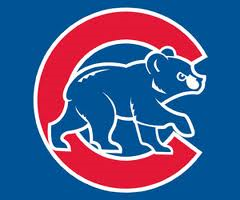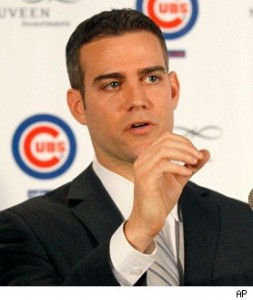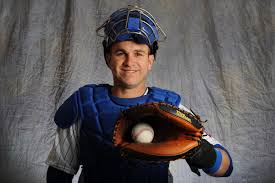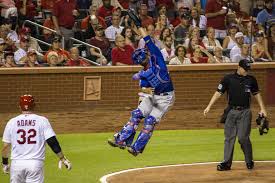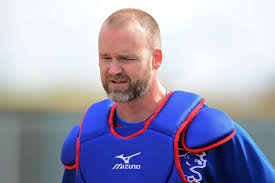When the Cubs acquired Miguel Montero in a trade from the Arizona Diamondbacks and signed free agent David Ross away from the Boston Red Sox, it was presumed that incumbent catcher Welington Castillo would be a former Cub by opening day.
However, opening day, a 3-0 loss to the St. Louis Cardinals, came and went and Castillo is still a Cub.
It now appears that Cubs’ President Theo Epstein was not posturing when he said during Spring Training that he embraced the strategy of keeping three catchers on the active roster even though none of them can play another position.
The assumption was that Epstein, frustrated by underwhelming trade offers for Castillo, was merely trying to create the perception that the Cubs were not desperate sellers. But as anachronistic as keeping three single-position catchers on a 25-man roster is in this era of specialization, it actually makes perfect sense here.
Montero, 32 in July and signed through the 2017 season, bats left-handed and struggles mightily against southpaw pitchers. Since debuting in the major leagues with the Diamondbacks in 2006, Montero, in 778 plate appearances against lefties, has a .234 batting average with a .297 OBP, .353 slugging percentage and .650 OPS.
His struggles were even more pronounced last season when in 115 plate appearances, Montero averaged .198 with an OBP of .252, a slugging percentage of .311 and an OPS of .563.
The good news for the Cubs is that by every measure, Montero not only produces better against right-handed pitching but produces at a high level.
In 2,652 plate appearances against right-handed pitchers, Montero has generated a .272 batting average, .356 OBP, .442 slugging percentage and .797 OPS.
His walk rate improves against right-handed hurlers to 10.7%, and his strikeout percentage drops to 18.6%. Montero’s WRC+ (weighted runs created) is a respectable 110 (anything exceeding 100 is considered above average).
On the other hand, Castillo, 28 later this month, struggles against righties like Montero does against lefties but belts southpaws even more prodigiously than Montero does right-handed pitching. In 809 career plate appearances against right-handers since debuting with the Cubs in 2010, Castillo, under club control through 2017, has batted .240 with a .308 OBP, .376 slugging percentage and .684 OPS.
Yet in 260 plate appearances against left-handed pitching, Castillo has averaged .306 with an OBP of .373, slugging percentage of .472 and OPS of .845. His walk and strikeout rates of 7.7% (7.2%) and 21.9% (25.2%), respectively, are also enhanced against left-handers, and his WRC+ is a gaudy 134.
There is a sentiment that the right-handed hitting Ross could platoon with Montero, thus obviating the need for keeping three catchers on the roster and creating more roster flexibility. However, over the last two seasons combined, Ross has averaged a meager .197 with 11 homers and 25 RBI in 286 plate appearances. Admittedly, Ross’ production against lefties is appreciably better than against righties, but at age 37, Ross is probably best suited being Cubs’ LHP Jon Lester’s personal catcher, as he was when the two were in Boston the last two seasons.
True, Montero is a superior defensive catcher to Welington Castillo, particularly as a receiver. 94.0% of pitches that he received in the strike zone last season were called strikes versus only 87% of those received by Castillo. Moreover, 16% of pitches that Montero received outside the strike zone were called strikes versus only 14% for Welington Castillo.
Quality receiving skills are hidden production that could make a huge difference over the course of a full season. It reduces pitchers’ workload and also puts pitchers in more advantageous counts.
Castillo blocks balls in the dirt as well as any catcher not named Yadier Molina. Plus his receiving skills likely would improve in a platoon situation with Montero and Ross because he would be less susceptible to the attrition from being the main bulwark behind the dish; and he would continue to gain the experience that has made Montero and Ross such defensive stalwarts (Castillo has caught about 1/3 of Montero’s 1760 innings and roughly 10% of Ross’ 5145).
If Cubs’ fans have any lingering doubt about the prudence of keeping these three catchers on the 25-man roster, they need only recall last season. When Welington Castillo went on the disabled list, backup catcher John Baker replaced him as the starter and journeyman Eli Whiteside, then 34, was purchased from the Iowa Cubs to provide depth behind Baker.
They combined to average just .184 for the Cubs with no homers and 17 RBI in 234 plate appearances. Keeping these three catchers likely will prevent another precipitous offensive drop-off if one of the masked marauders should miss time due to injury.
Thus, the Cubs should be very discriminating about trade offers for Castillo given that he and Montero are perfect complements to one another offensively.
The two could establish a highly productive platoon.
